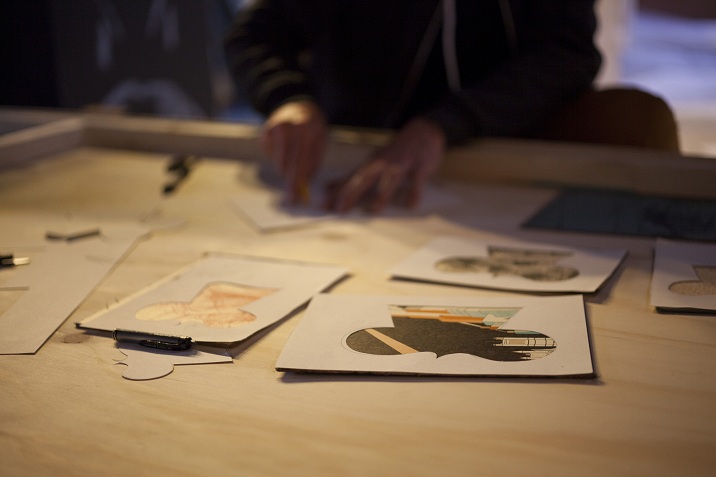
In the aftermath of another fantastic gallery show, this time at White Walls in San Francisco, Sickboy took some time out from painting massive walls with Eine to answer a few questions.
Shower: How did the concept of the Wonder Club arise? Can you give some examples of the daydreams that have inspired this body of work?
Sickboy: I used to have an illustrated picture of the Mad Hatters Tea Party in my bedroom as a kid, and it’s still in my family home. To this day I pondered on the thought of its inspiration on my life and that opened up a chasm of ideas. I have also been known to have some crazy dreams, I won’t bore you with the details, but it’s possible to transcribe some of them from the Wonder Club body of work.
You delved into the world of ‘mixed media ephemera’ as part of the show. Can you explain how and why?
Yeah sure, I spent the month prior to the show working and living above a studio in San Francisco, courtesy of the gallery. In that time I collected many story books from local shops and found some great surfaces to paint on including some metal drawers. All of these were included in the show. Many of the books were used in the temple assemblage. I’d remove the covers and paint on the backs of them. It’s satisfying to know that those pieces would never have been created without spending time in San Francisco.
As part of the Wonder Club you aimed to revisit your inner child for inspiration. When I was a kid it was all about Lego and Thunderbirds. Was there a certain toy, film, comic or fairytale that inspired you?
I guess I refer more to what art has represented to me in my youth. I copied Sweeny, the toddler comic strips, and gave them as Christmas presents once, and later down the line my first graffiti pieces mean a lot to me in their naivety. I lost a big bag of photos that had my first pieces in it but I can remember their metallic holts duplicolour essence, that to me is my inner child.
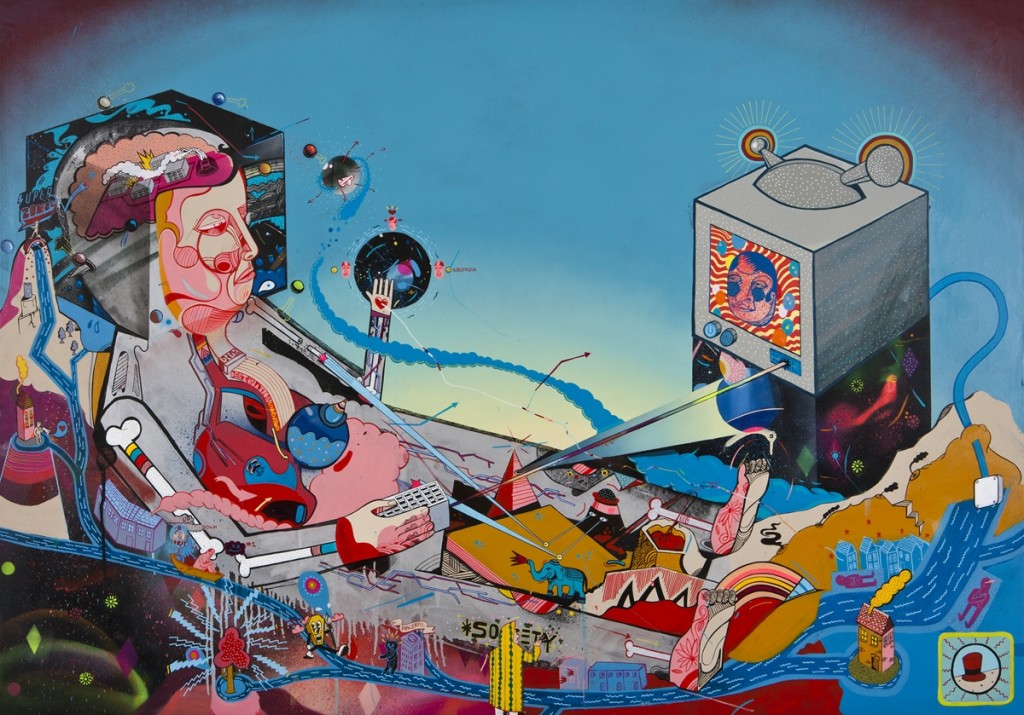
I had the privilege of attending the opening of your Heaven and Earth show in London last November and was blown away. I expect anyone who also visited White Walls felt the same way, but how do you keep motivated and maintain a high quality of work? How do you keep your work fresh?
Thanks for the kind words. At the moment I’m still having a lot of fun so in that sense it’s easy to stay motivated. I asked a similar question over drinks to Anthony Lister while we defaced postcards of the queen on Shaftesbury Avenue, and he said to me that it has to be all about the art, and it does. If you can make the art become your life and vice versa then it all blurs into one and work just becomes a bi-product of living.
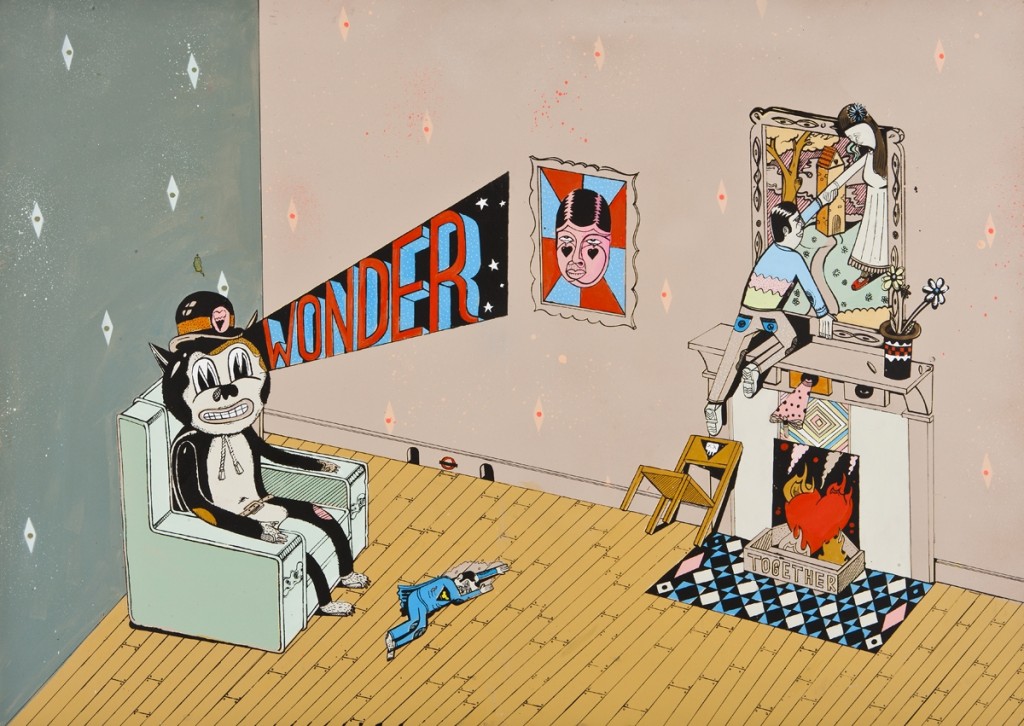
Your London show was heavily influenced by religion, and Wonder Club draws inspiration from “the age of enlightenment.” Is religion important to you and how do you feel this spiritual influence affects your work?
I’m more interested in history and its impact on art. I allow it to inform some of my process in making paintings. The Age of Enlightenment was more to do with a cultural rebellion against religion when people turned to science as the new gods, a lot of romanticism came to the forefront in art, for example the first hot air balloons were made and people were able to see the earth from the sky for the first time. You can find some amazing images drawn from the sky that are like the first versions of Google Earth.
I have always been intrigued by certain themes that run through your art, burning buildings and small cityscapes in ruin, TV’s and coffins with faces. What does each mean to you and do you consider small recurring details as important to your style?
I’ll leave their individual meanings to your interpretation but when I was working in my “logopop” series in 2009 I was trying to develop my own visual language, I like to use symbols to give my work an ambiguous narrative. I think it’s nice to tie all the pieces together via a common set of homemade symbols. People familiar with my work will be able to piece together parts of the puzzle as it evolves over time.
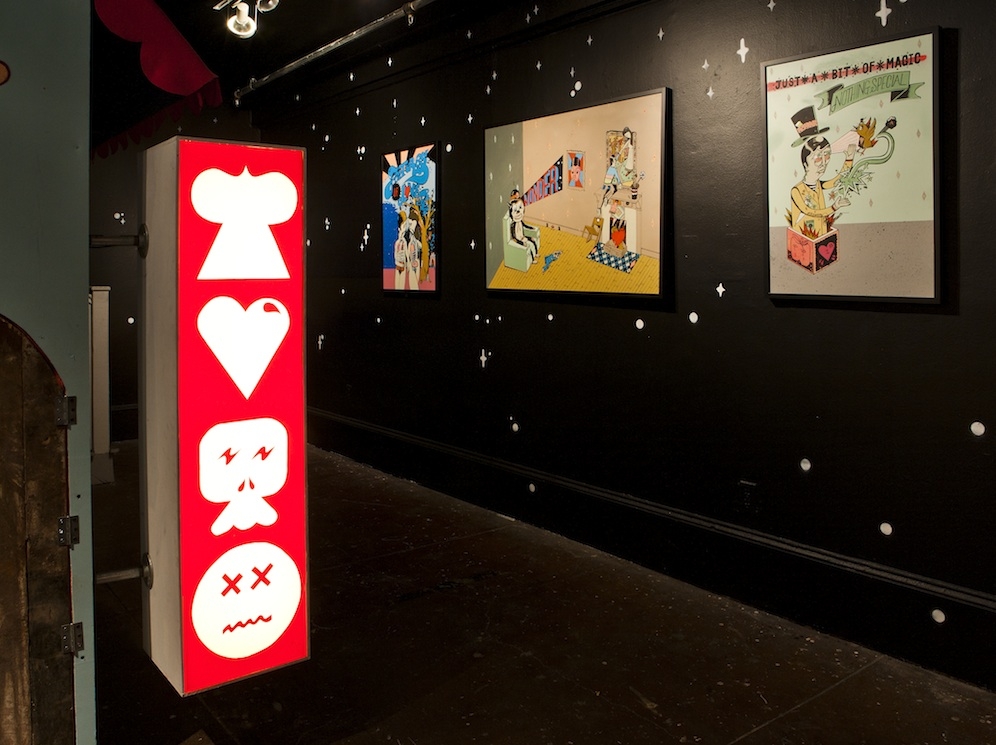
In London you collaborated with D*Face, Conor Harrington, Word to Mother and Paul Insect among others, and in San Francisco you are again working closely with Eine. Do you feel working with others drives your work, increases your enthusiasm and influences your creativity? Or is it simply because of your friendship and appreciation of their art?
I’m pretty easy going when it comes to collaborating. In 2000, I formed the AAGH crew with fellow artist Dr. Dog. The crew stood for “Ave A Go Heroes” and the emphasis was on collaboration. I try to keep those values buoyant today. All of the artists I have worked with are personal friends so it’s always good fun.
And again with your Wonder Boxes, in San Francisco, you are seeking audience participation. It’s nice to see an artist communicating with the people who admire said artist’s work. Have you always sought public opinion in both your street and gallery work? Is it important to you?
It’s been a bit of a running theme with my solo shows, it keeps things interesting for me. I like to reach further than just the internet and involve people from a wide demographic.
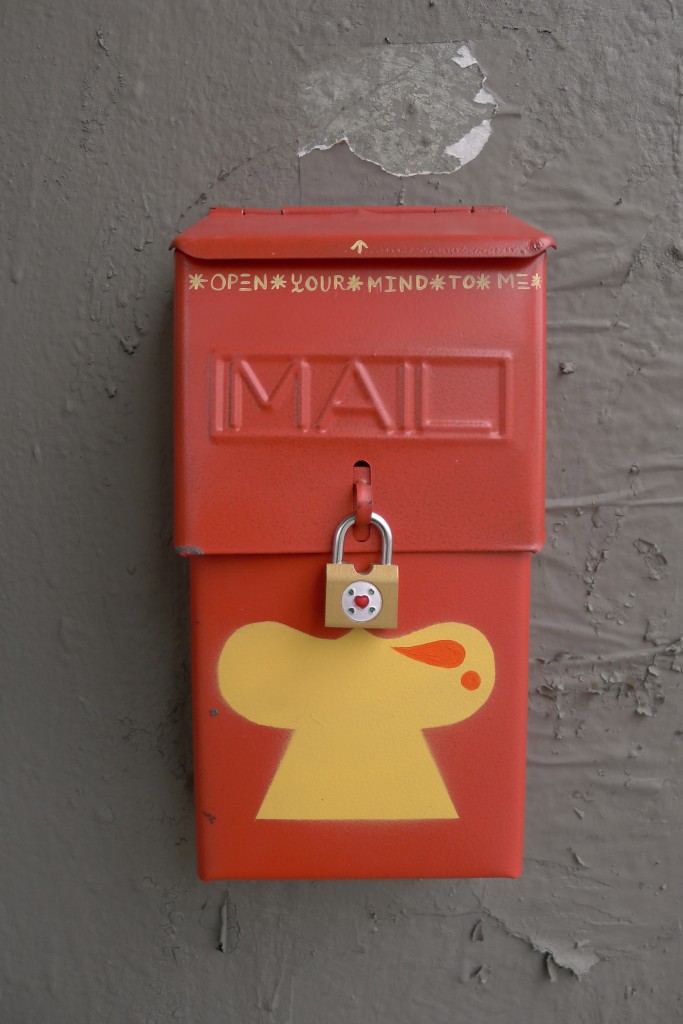
How do you find the graffiti and street art scene out in San Francisco compared to England and, in particular, London?
I found the streets to be pretty clean to begin with, good spots seem to be buffed quickly. I saw a few well-known names that put the city on the map through the years, mq, giant, twist etc. There’s a strong creative community over there, I think I saw a lot of local graffiti inside my “artists’ refuge” install on the opening night when my girlfriend handed out pens to everyone and my childhood bedroom got recreated San Fran style! At this point I was able to put some faces to tags etc. Someone lit a joint in there and the fire brigade turned up, good times!
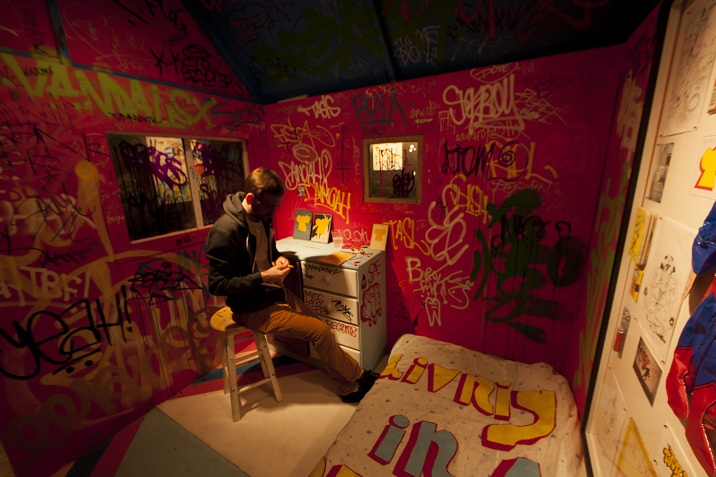
You have almost become synonymous with painting caravans. Why choose caravans in particular?
Painting should be about making your own world. In mine I got obsessed with caravans after finding a warehouse that used to be a travellers’ site. It had been blocked off by the council and three caravans were there. I painted the first two and loved the format so the week later I went back to paint the third. I had a look inside and bizarrely there were graffiti magazines and sketches everywhere inside. Also a bong with a well-known graffiti magazine sticker on it, admittedly it felt a bit invasive, but strangely enough I had stumbled across the abandoned caravan of a fellow writer. I think at that point I really went to town to find as many as possible. Every week I hunted them down. I looked on Google Earth and kept my eye on traveller sites. I put myself in some precarious positions in the process and have a large collection of “top to bottom” caravans to add to my graf repertoire as my reward. These are the British touring equivalent of the NYC subway for me, and I add foreign counterparts whenever I get the chance.
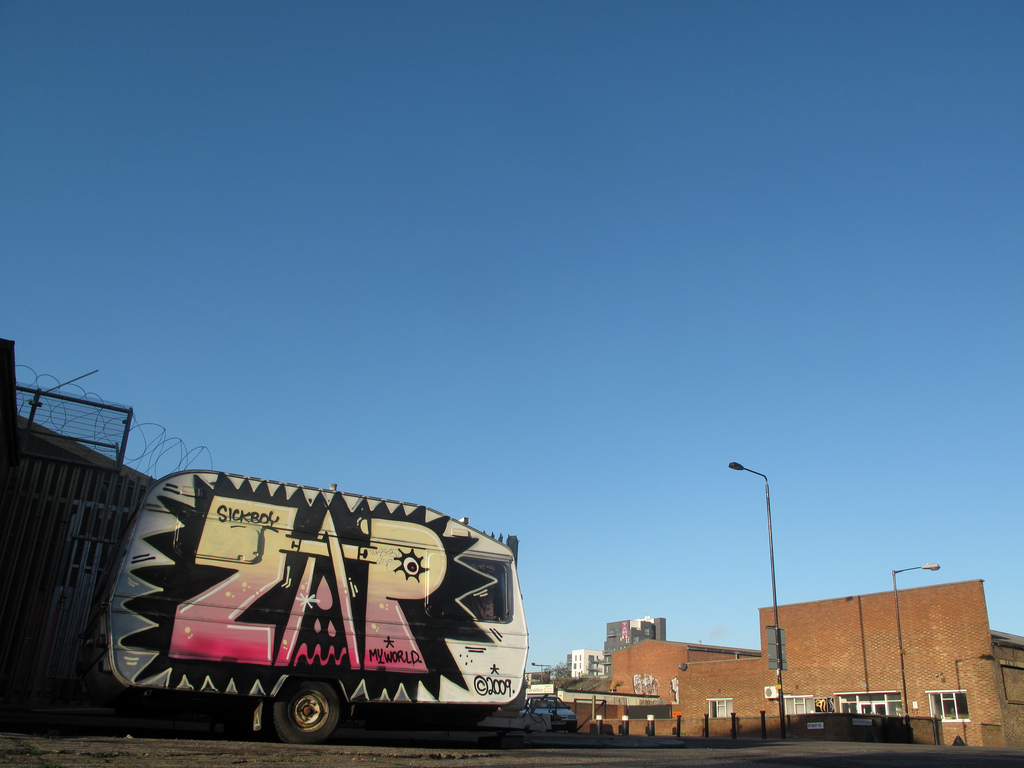
Were you ever influenced by 80s Philadelphia and New York or did you come into contact with graffiti through a different source?
I would have to say beyond “Spray Can Art” and “Subway Art” I didn’t delve too deep in the original style front. I first learnt handstyles from my friend at school whose brother was a prolific writer from Manchester. I used to soak up influence with my face stuck to the bus windows in any bombed area I could find. Magazines like Graphotism in the early days were pretty sacred and after I moved to Bristol I met some really inspirational writers like Eko, Paris & Xenz. With all that around I didn’t need to try and live out a New York dream in downtown Bedminster.
In some respects you have to be considered a bit of a veteran with regard to producing art on the streets. How do you feel modern street art has developed and how do you see it changing in the future, for example with changing levels of appreciation and potential aesthetic developments?
I think over the past few years the scale and production of pieces has shifted up a gear, the extendable roller pole had something to do with that. It goes without saying there is a much broader level of appreciation for street art and graffiti. I felt nervous it was going to eat itself at one point but it seems to have morphed healthily into some interesting directions, now like any sub culture it goes through phases and has its highs and lows. I feel the movement is in a pretty good place currently.
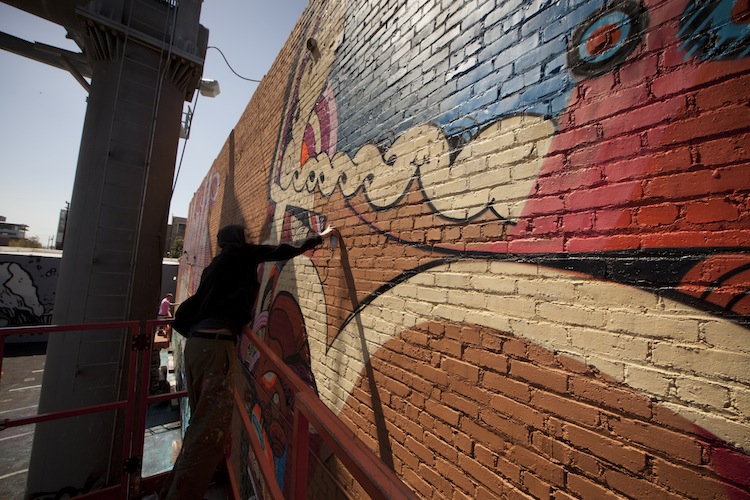
In the past you have mentioned that you have made a conscious effort to produce more studio and gallery work than painting on the streets. What originally made you spend more time in the studio?
I don’t know about a conscious effort but the work load from the past year of shows hasn’t allowed for much other than the odd piece here and there. I used to spend more time making burners but now I just try and keep things simple so I don’t shrivel up into a studio nugget.
Having been stuck in the studio for too long, will we be seeing a lot more Sickboy on the streets?
Yes it’s already started, my goal was to complete Heaven and Earth and Wonder Club, respectively, and then empty the colossal amount of spray cans I have in my studio. Last week I completed a mammoth wall in two days with Eine in San Francisco. We kicked it on Bloody Marys in a police bar and then painted two days solid and I went straight to catch a plane. I was on a similar tip a few years ago, so I expect to be doing more of the same while I work on some interesting projects on my days off.
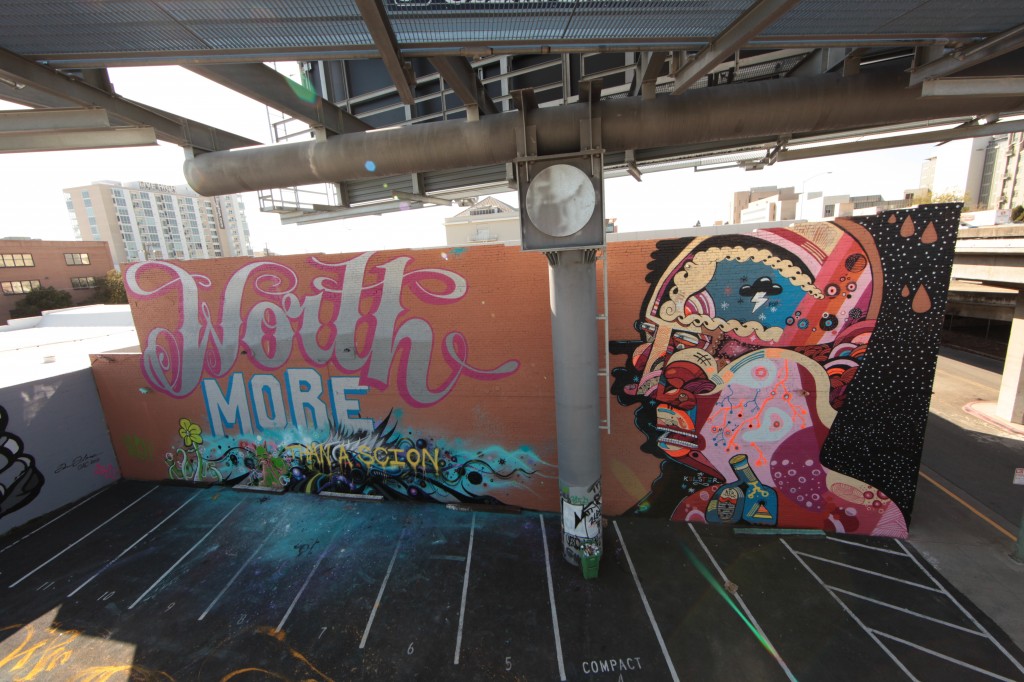
Photos by Colin M. Day, White Walls and Sickboy
